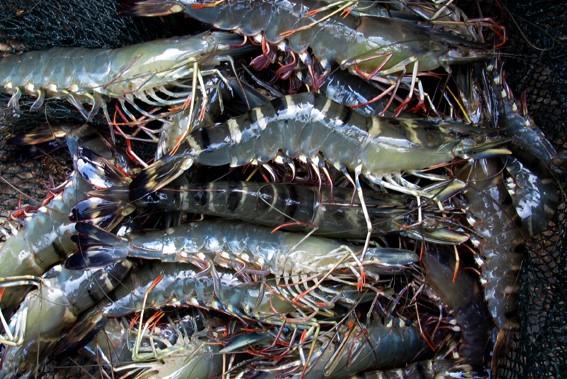WHERE DO THE QUALITY TIGER SHRIMP FRY PRODUCED BY FARMERS IN PINRANG COME FROM?
By: Idham Malik (Aquaculture Staff, WWF-Indonesia)
"The tiger shrimp fry from the Aceh broodstock are known to be of good quality, selling very quickly in the fry market. About 90 percent of tiger shrimp fry buyers are fanciers throughout Pinrang, 10 percent come from direct farmers," Ujang, a staff of Bagindo Benur Utama (BBU) Hatchery in Tasiwali'e Village, Suppa District, Pinrang Regency, South Sulawesi, explained to us, a WWF-Indonesia team that was conducting a tiger shrimp fry traceability survey in Pinrang, March 30-31, 2018.
In this survey, we visited three tiger shrimp fryers located in Lanrisang and Suppa sub-districts, two hatcheries located in Suppa and Barru sub-districts, and one small hatchery.
The productivity of aquaculture depends on the quantity and quality of the fry used. Such is the case with tiger shrimp farming in Pinrang District, South Sulawesi. Seed availability and quality are thought to play a role in the 2015-2017 decline in tiger shrimp production in Pinrang, in addition to extreme weather factors and inappropriate shrimp farming management.
Therefore, this fry traceability survey is important to see the level of fulfillment of fry quantity, fry production methods to determine fry quality, to trace the traceability of fry managed by farmers. Starting from the nursery, hatchery, and backyard small scale), to the origin of tiger shrimp broodstock.
The availability and quality of fry is highly influential in increasing tiger shrimp productivity. For this reason, this fry survey for tiger shrimp farmers in Pinrang still predominantly obtained fry from hatcheries located in Pinrang and in Barru. Based on the survey, there are two tiger shrimp fry production centers, namely Bagindo Benur Utama Hatchery (BBU) located in Tasiwali'e Village, Suppa, Pinrang, and Puncak Sinunggal hatchery, Barru Regency.
"The quality of local shrimp broodstock is also competitive with Acehnese broodstock. Therefore, demand is also quite high, and people rarely complain," explained Komeng from Afiat Backyard, Barru Regency. The Aceh broodstock is well known for its high number of eggs and hatching rate, which is 500-750 in one spawning. Meanwhile, the local tiger mother has an egg count of 200.
In one order, BBU obtained 120 broodstock from Perlak, Aceh Province, while Hatchery Puncak Sinunggal ordered 85 - 100 broodstock from Aceh.
Many factors affect the quality of the fry. Starting from the availability of sufficient and quality fry feed, to the handling of fry in the nursery. That said, breeders play an important role in ensuring the quality of the fry - which will determine the future quality of tiger shrimp farmers.
In Pinrang, there are at least 31 breeders, with a production capacity of between 5 - 10 million fry per cycle. The fanciers raise the fry for between 7 - 14 days, until there are buyers from tiger shrimp farmers.
"The survival rate of fry in the breeder is up to one hundred percent, sometimes even more than the count. This is because the fingerlings purchased from the hatchery have been added with 20-30 percent," explained Waris, a federator from Lanrisang, Pinrang. However, there is something that still needs to be addressed by breeders, which is the habit of mixing different origins of fry in one pond. This makes it difficult to trace the origin of the fry, and also affects the uneven size of the fry.
The results of the fingerlings survey in Pinrang will be presented at the Shrimp Aquaculture Workshop planned for June 25, 2018. The survey results will contain recommendations for fry management, from broodstock handling, handling in the hatchery, to tiger shrimp fry breeding. Healthy fry are the key to increasing shrimp productivity and improving the economy of Pinrang people.





